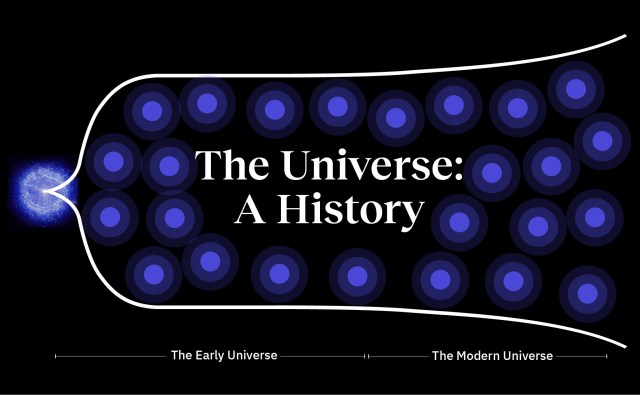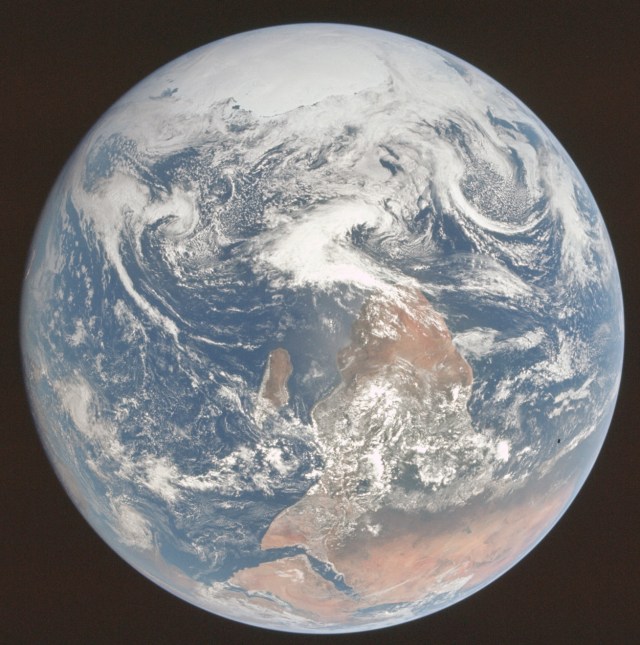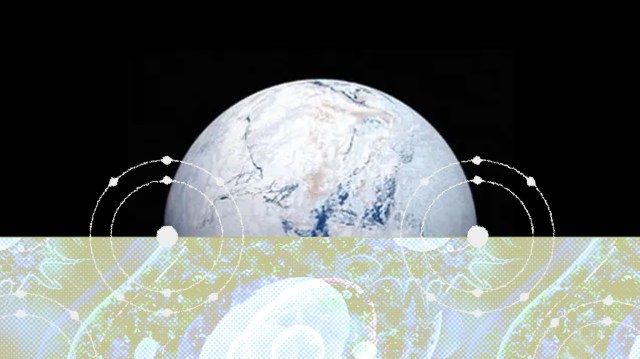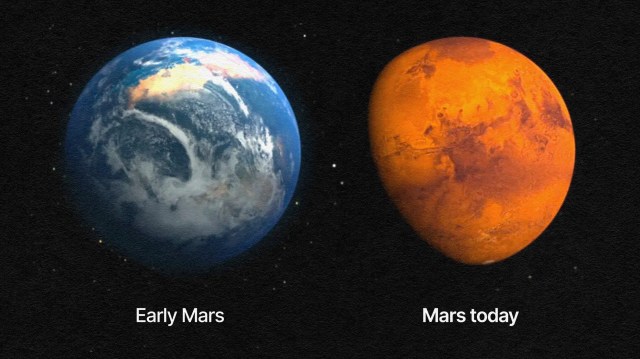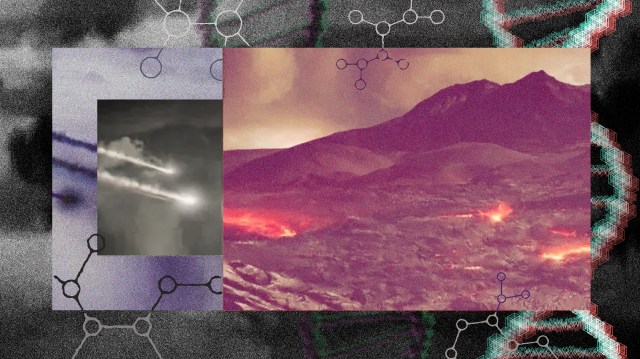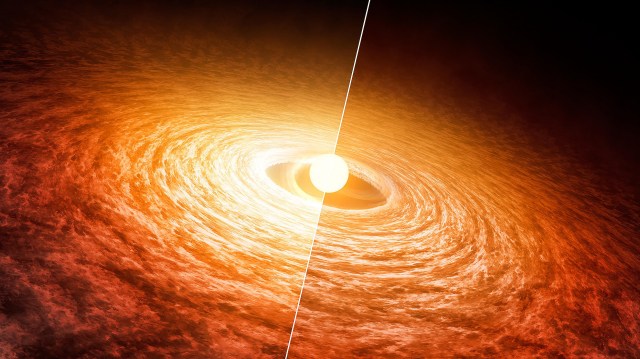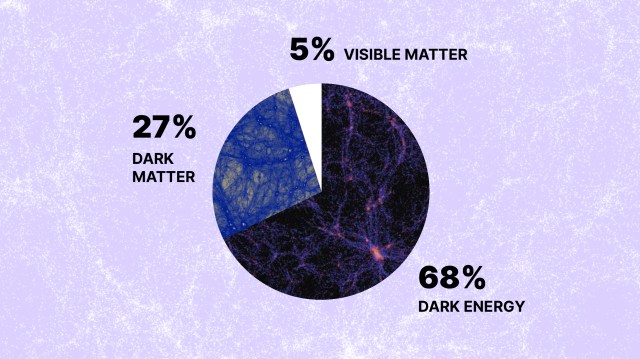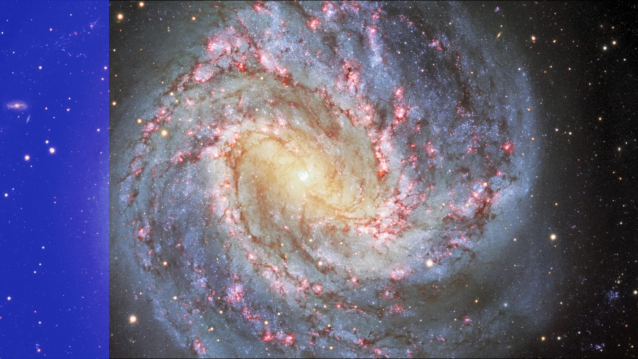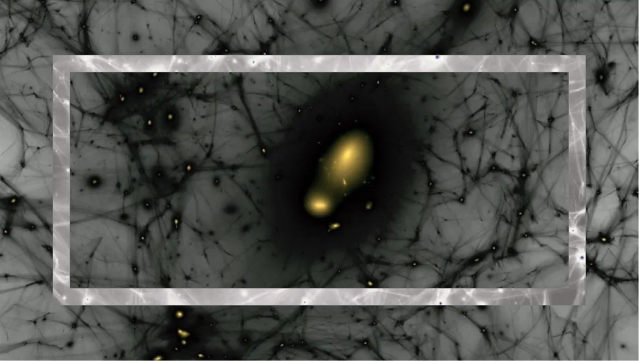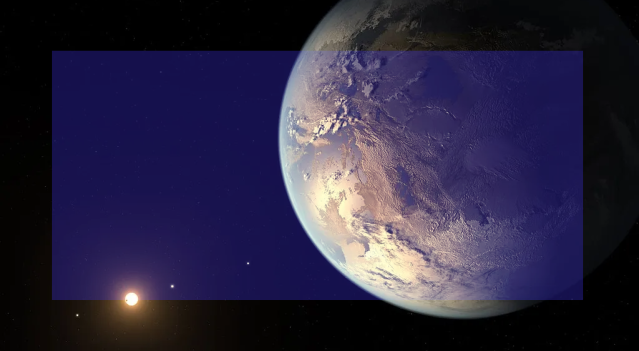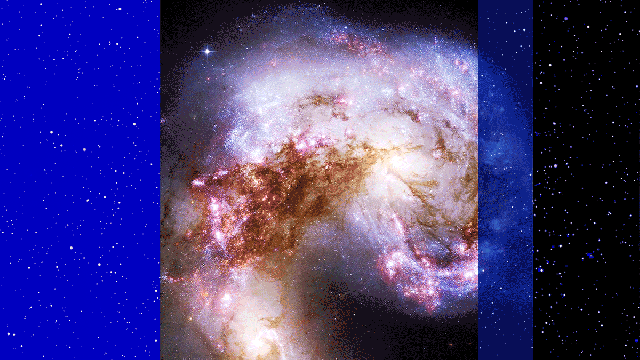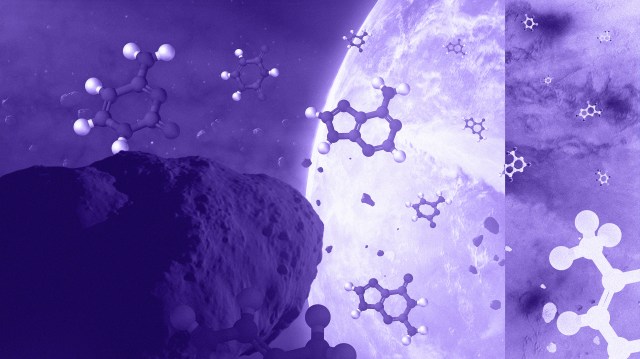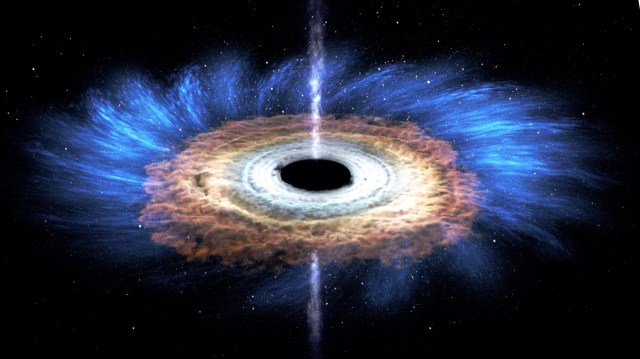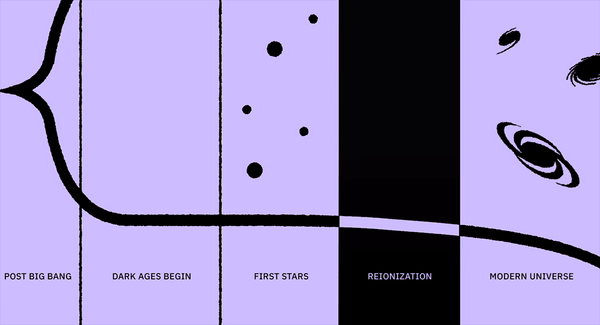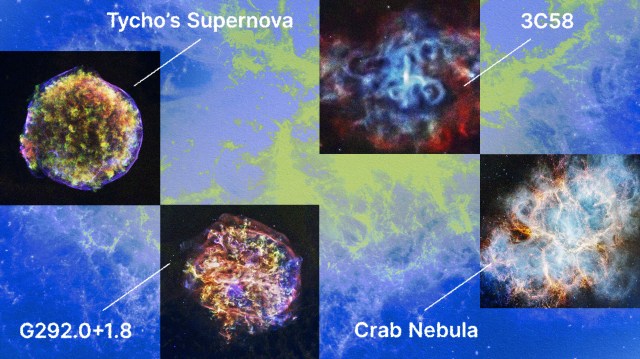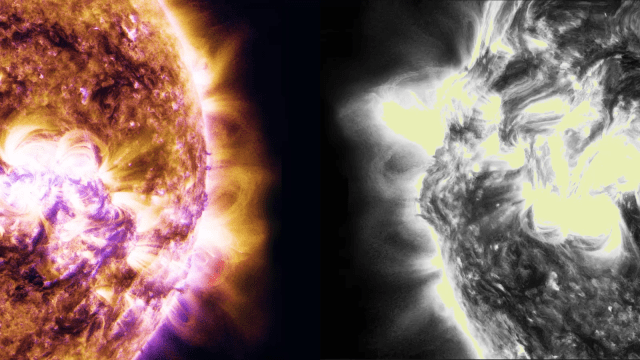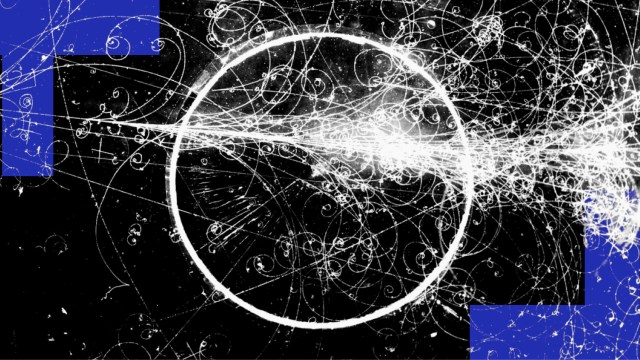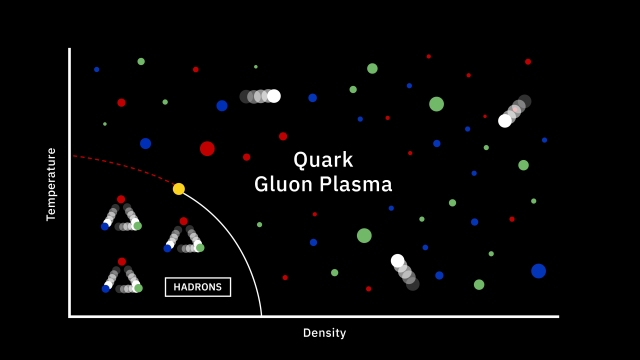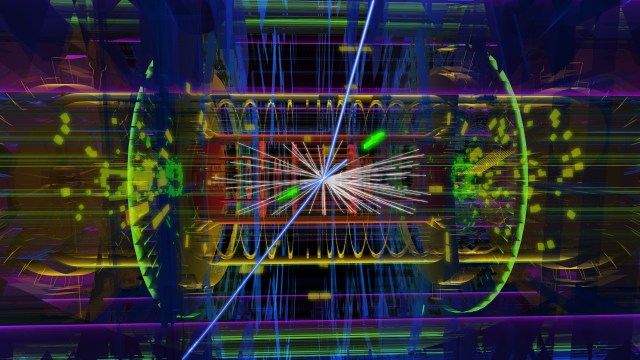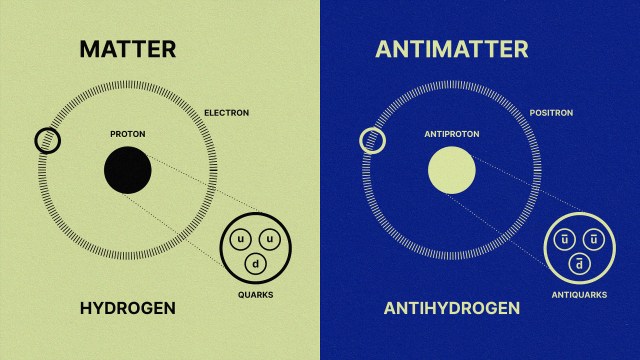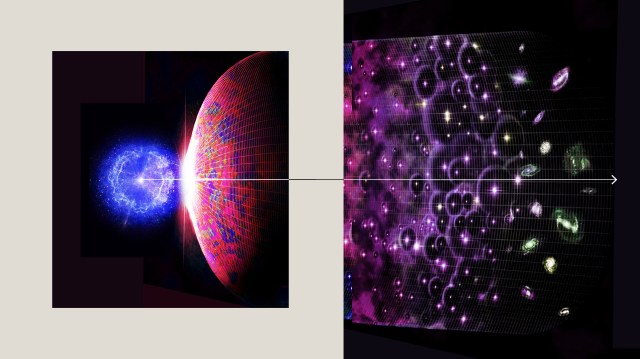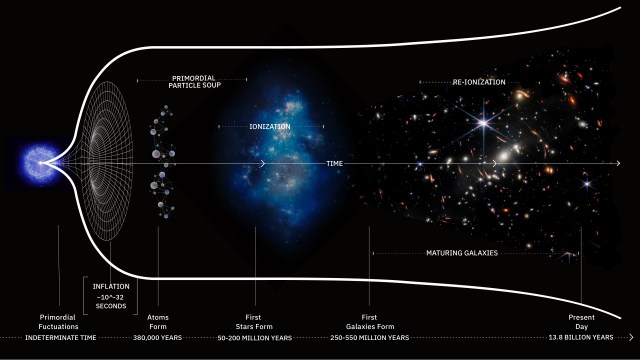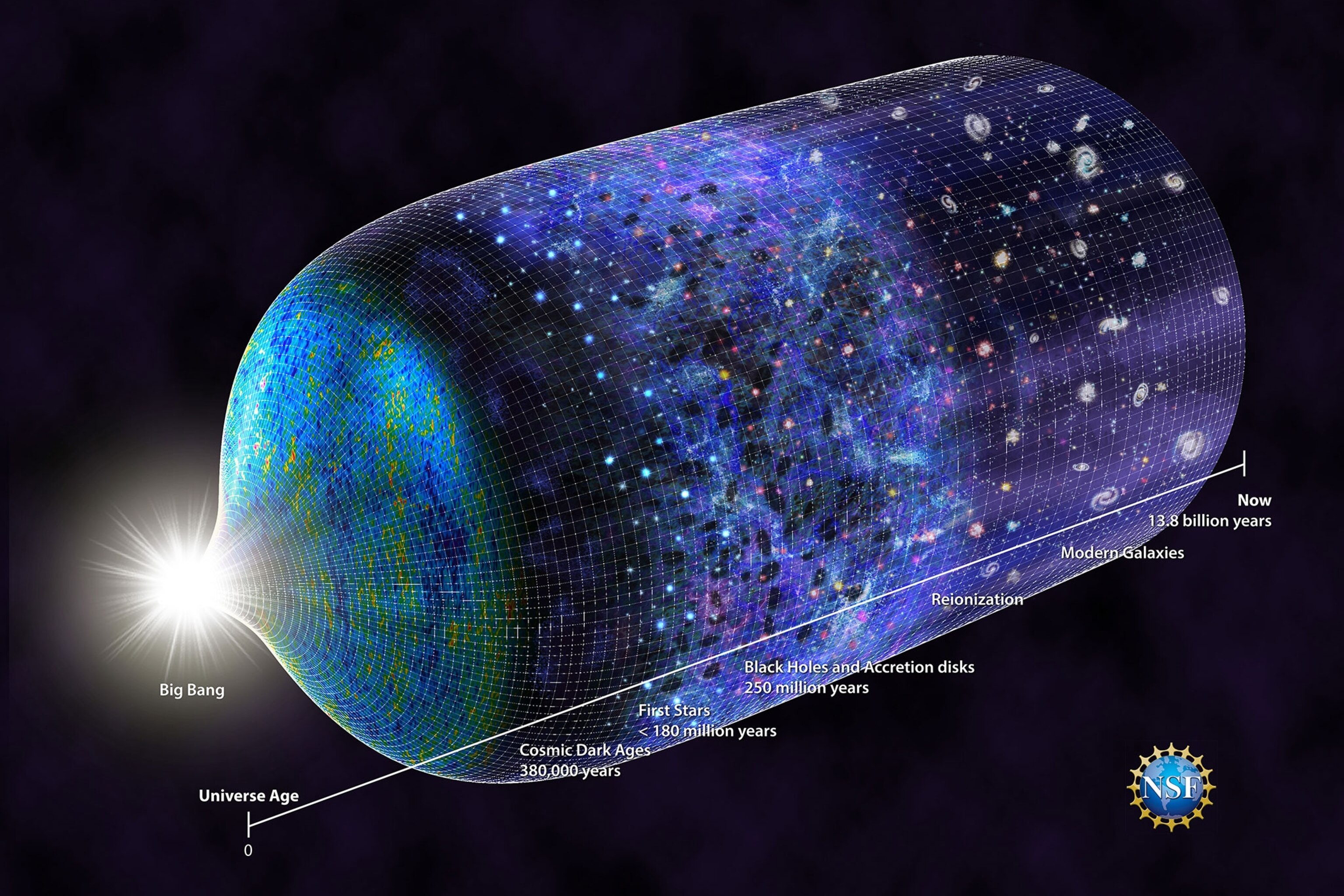How particle accelerators recreate the Universe’s first moments
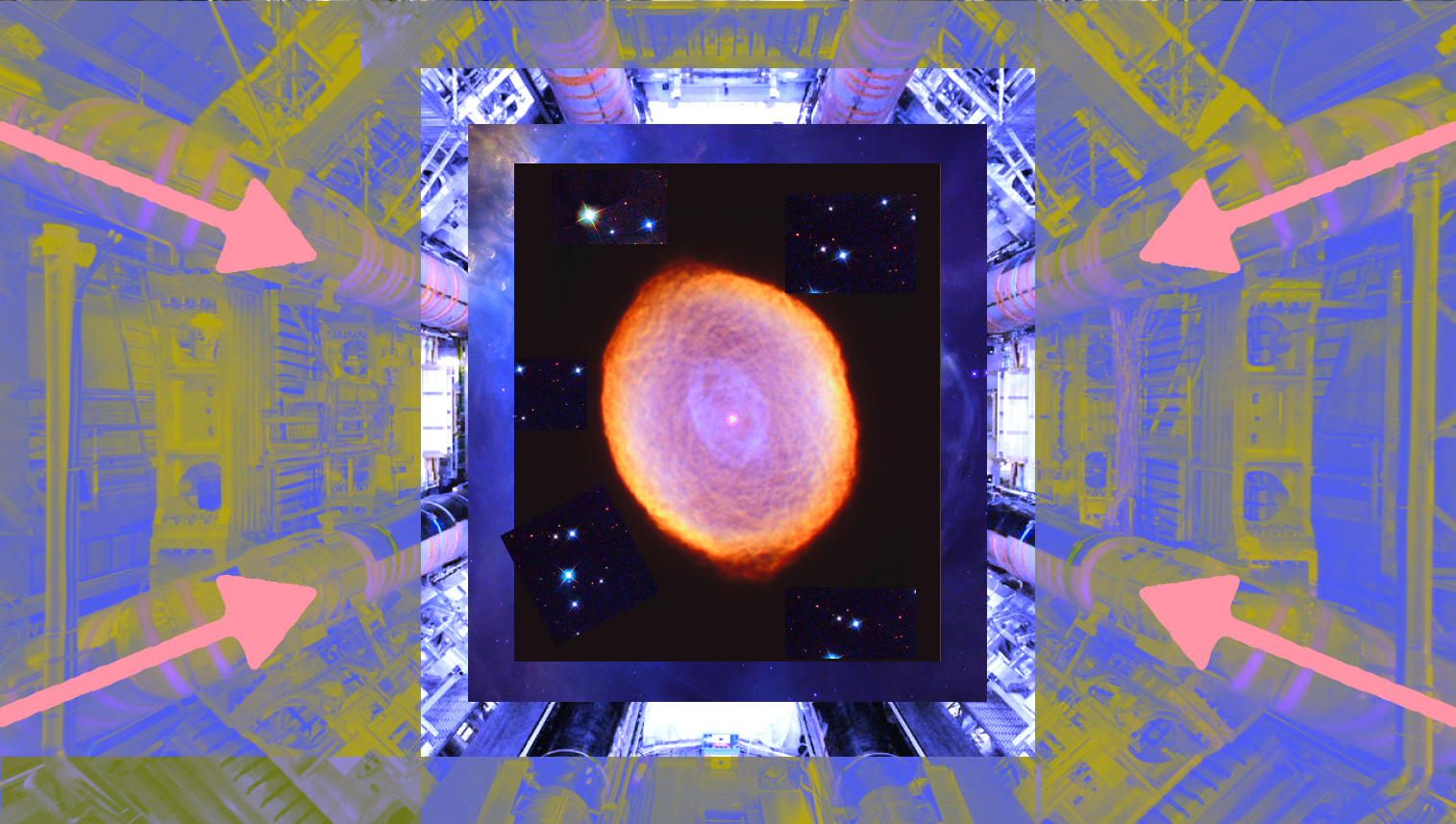
- Using particle accelerators like the Large Hadron Collider, scientists can replicate the early Universe’s conditions, revealing insights from the Big Bang to the formation of atoms.
- These experiments shed light on the Universe’s initial moments and its evolution into a complex cosmos filled with stars and galaxies.
- This blend of theoretical and experimental physics has dramatically enhanced our understanding of the Universe’s earliest epochs.
The theory of the Big Bang tells of a time nearly 14 billion years ago when the Universe was a much hotter place. But how can we know what the Universe was truly like so long ago? A time machine would work, but that technology hasn’t been invented. So scientists do the next best thing: They use particle accelerators to recreate the conditions of the early Universe in the laboratory. In this way, data generated in particle physics experiments can offer a glimpse into the earliest moments of the cosmos.
However, it’s important to understand both the power and the limitations of this approach. Big Bang theory imagines a series of epochs, each with a characteristic energy and temperature. Not all of these epochs are well understood. For instance, the earliest moments of the Universe remain elusive. They are shrouded in mystery and our understanding is merely a series of educated guesses. However, in a fraction of a second, the conditions of the early Universe quickly transitioned to ones that are testable by modern technology.
Recreating the early Universe
The Large Hadron Collider (LHC), which is the world’s most powerful particle accelerator in operation, accelerates pairs of protons to nearly the speed of light and slams them head-on into one another. The proton’s motion energy is converted into heat energy that reaches temperatures 100,000 times hotter than the center of the Sun — temperatures that were last common in the Universe less than one-trillionth of a second after the Universe began.
Other experiments have studied the behavior of matter when the expansion of the Universe cooled enough such that the laws of particle physics no longer applied, and the era of nuclear physics commenced. By the time the Universe was just a few minutes old, the makeup of the Universe and the laws that govern it were already locked in place. Three minutes after the Universe began, the nuclei of the primordial hydrogen and helium that made up the first stars already existed (though it would take hundreds of thousands of years before the Universe cooled enough to make atomic hydrogen and helium). After the formation of atoms, gravitational forces dominated for hundreds of millions of years, leading to the creation of the first stars — a point at which nuclear physics once again played a crucial role.
So, which epochs of the early Universe do particle accelerators study? Let’s begin the story during an epoch for which the story is not yet fully understood. At the very early time of about 10-36 to 10-32 seconds after the Universe began, cosmologists believe that the Universe experienced a period of expansion at speeds that exceeded the speed of light. This is called the inflation epoch. There is a lot of circumstantial evidence that this occurred, but there is no definitive confirmation that inflation actually occurred. As of this writing, inflation remains a theoretical proposition.
At the end of inflation, the Universe was hot and dense and quite different from the Universe of today. The Universe was far too hot for atoms to exist. The same was true for protons, neutrons, and quarks, which are the particles found inside protons and neutrons. Even mass and electric charge are thought to have not existed. So, the entire Universe was full of highly energetic and massless particles.
From theoretical physics to experimental insights
Scientists are not entirely sure what happened in the Universe before about 10-13 seconds. One reason is that we lack the technology to concentrate enough energy to study those early times. However, the LHC allows them to collide together pairs of protons traveling at nearly the speed of light. The maximum energy generated in one of those collisions will generate temperatures last common in the Universe 10-13 seconds after it began.
With that capability, our understanding of the evolution of the Universe improves dramatically. At about 10-12 seconds, an energy field called the Higgs field came into existence. This field interacted with the matter in the Universe and gave particles their mass. At the same time, electric charge came into being. Instead of a Universe in which only massless energy existed, particles with mass came into being. These particles were called quarks and leptons. Today, quarks are found only inside protons and neutrons, and the most familiar lepton is called the electron. The Higgs boson, which is a vibration of the Higgs field, was discovered in 2012. (Disclosure: The author participated in that discovery.)
However, in that early time, quarks were not restricted to exist in protons and neutrons. Quarks could roam freely. After all, the Universe was too hot for protons and neutrons to exist: If you placed a proton in that early Universe, it would effectively melt and let its constituent quarks run freely — much like if you put an ice cube on a hot sidewalk, where the heat melts the ice and water can move around.
Time progressed and the Universe expanded and further cooled. By about one-millionth of a second (10-6 s), the Universe cooled enough that quarks could no longer wander freely. Strong forces gathered the quarks together, forming protons and neutrons. Electrons existed, as did an unfamiliar particle called a neutrino. Neutrinos are very low-mass subatomic particles that interact very weakly with matter. In the modern day, they are generated in nuclear reactions, and they don’t have much effect on the Universe. However, the density of the Universe at 10-6 seconds was so high that neutrinos interacted fairly strongly with the protons, neutrons, and electrons that dominated the Universe.
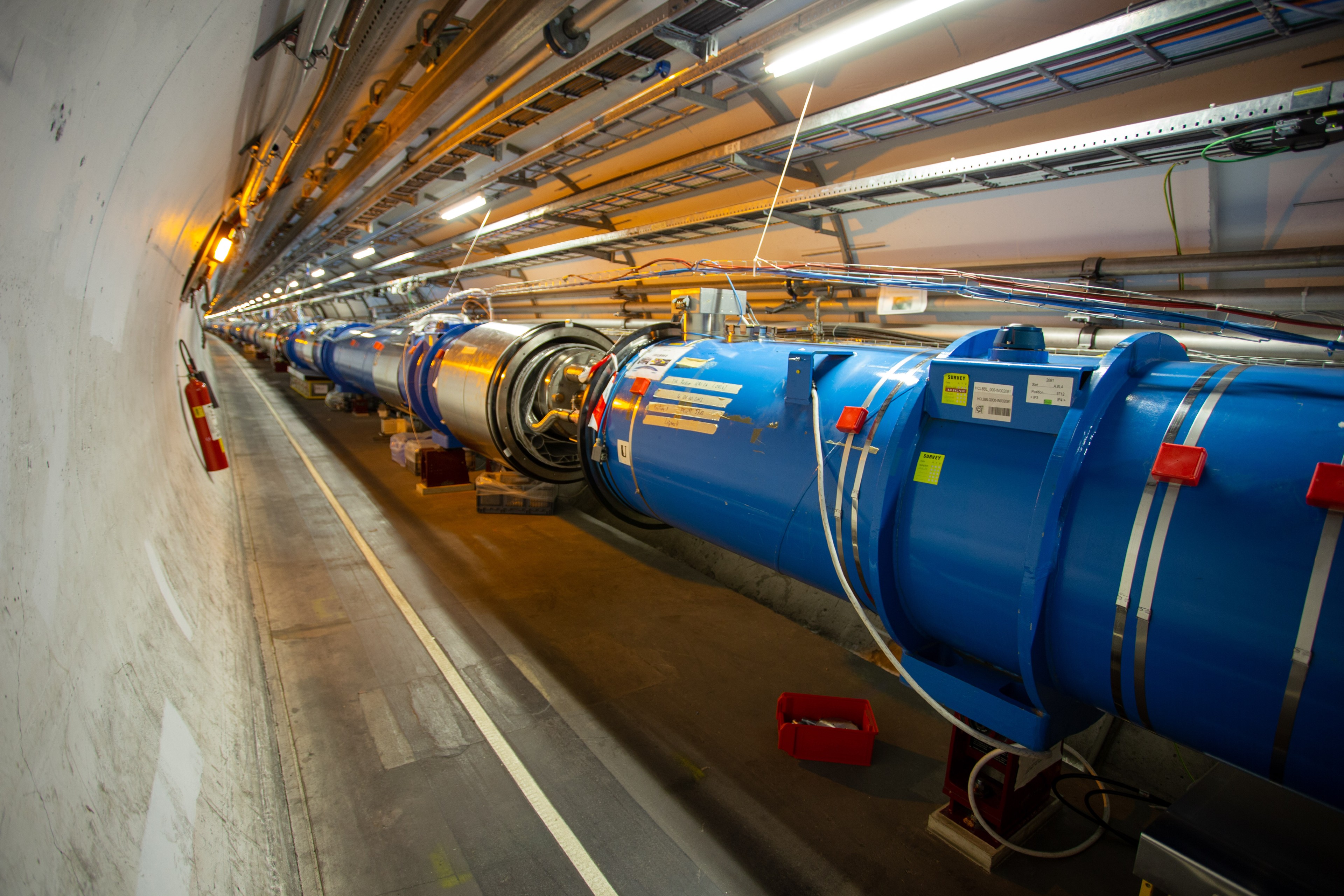
By the time the Universe was about one second old, the density of the Universe dropped enough that neutrinos no longer interacted with other forms of matter. Indeed, our current Universe is full of neutrinos that last interacted with matter a scant second after the Universe began. Very sensitive experiments are underway which should be able to detect these primordial cosmic neutrinos within the next decade.
Over the next several minutes, the expansion of the Universe continued to cool to low enough temperatures that protons and neutrons could begin to clump together to form atomic nuclei. Had the density of the Universe stayed high, the nuclei of all of the known elements could have formed. However, the rapid drop in the density of the Universe only allowed for the simplest nuclei to form. By about three minutes after the Universe began, hydrogen nuclei (single protons) and helium nuclei (two protons and two neutrons) had formed, along with rare isotopes of hydrogen (deuterium and tritium).
By three minutes, the Universe consisted of about 75% hydrogen and 25% helium. (That’s by mass ratio. If you simply counted hydrogen and helium nuclei, the ratio was about 92% hydrogen and 8% helium; the difference is because helium nuclei weigh four times as much as hydrogen.) There were also trace amounts of other substances, but for the most part, all other elements would not come into existence until they were formed in the center of stars.
So, this is the story of how particle accelerators teach us about the early Universe. At much later times (about 380,000 years after the Universe began), the Universe cooled enough for those hydrogen and helium nuclei to capture electrons and the first atoms came into existence. And the story was certainly not complete, as gravity eventually gathered those atoms into hot clumps that eventually became stars and galaxies.
Our understanding of the nature of the Universe from the very beginning to just a couple minutes after it began is quite sophisticated and guided by firm measurements. More importantly, our understanding is not from theoretical speculation, but rather from complex and detailed measurements. Using giant “atom smashers,” scientists can literally recreate the conditions of the early Universe and see how things work.
The drive to understand how our Universe began is an ancient one, with the first stories found in some of humanity’s earliest writings. Through a combination of astronomical observation and experiments performed inside enormous particle accelerators, scientists are beginning to have a very clear understanding of how it all began.
